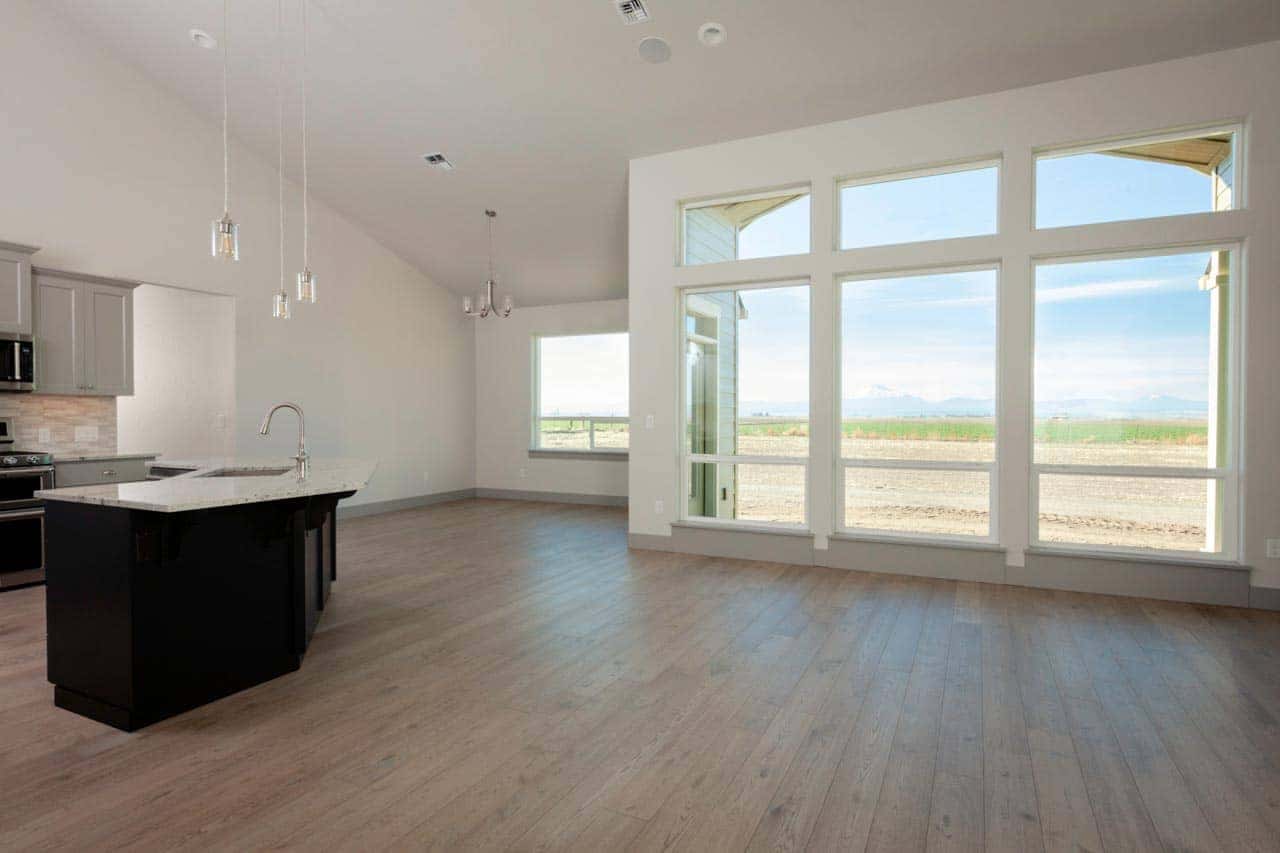
For many retirees planning to build their dream home in Oregon, it’s not just about floorplans and finishes. It’s about feeling confident and knowing what to expect financially, legally, and logistically before breaking ground. Property taxes, building codes, permitting timelines, and HOA requirements can all feel like a maze of fine print, especially if you’re new to the process or planning to build on a fixed income.
Let’s walk through what to expect when it comes to Oregon property taxes and building regulations for new construction.
Why Taxes and Building Rules Matter When Building Your Retirement Home
If you’re building a new home to spend your retirement years in, chances are you’re thinking long-term. You’re budgeting not only for construction but also for the years to come—upkeep, utilities, and yes, property taxes. Oregon is often praised for its natural beauty and retiree-friendly communities. But understanding the costs and regulations that come with new construction is key to ensuring your home stays both affordable and manageable.
We also know that building from scratch can feel overwhelming. Between permit applications, inspection requirements, and local zoning rules, it’s easy to feel like you’re missing something. That’s where having the right builder and the right information makes all the difference.
Oregon Property Taxes for New Construction: The Basics
How Oregon Property Taxes Are Calculated
Oregon’s property tax system is unique in that taxes are based on assessed value, which is different from the home’s real market value. After the passage of Measure 50 in 1997, assessed value is calculated by taking a property’s 1995 value and allowing no more than a 3% increase each year, except when improvements like new construction are made. The real market value is what the property would sell for in an open market, but that figure is not used directly to determine the tax bill unless it falls below the assessed value.
Oregon’s property tax rate varies based on where you live. It combines the base rate set by your county with taxes levied by school districts, fire departments, and other local services. These are known as “taxing districts.” The Oregon Property Tax Calculator states that the effective property tax rate in Oregon is currently 0.86%.
When You Start Paying Taxes on a New Build
You won’t pay full property taxes on your home until it’s completed and assessed as a finished structure. During the construction period, you continue paying taxes on the land value alone. Oregon’s assessors determine value as of January 1, so if your home isn’t yet built by then, only the land portion is taxed. Once construction is substantially complete, the new value is added and taxes are reassessed for the coming year.
Exemptions That Might Apply to Retirees
Oregon doesn’t automatically reduce property taxes for retirees. However, there are specific exemption and deferral programs available:
- Senior Property Tax Deferral Program: If you’re 62 or older and meet income and residency requirements, you may qualify to defer your property taxes until you sell your home or pass away. The state pays your taxes on your behalf, which becomes a lien on the property.
- Disabled Veteran or Surviving Spouse Exemptions: Veterans with service-connected disabilities may be eligible for partial exemptions, reducing their taxable assessed value by $26,303 or $31,565 depending on qualifications.
What You Need to Know About Oregon Building Permits & Inspections
Step-by-Step: From Permit to Final Inspection
All new home construction in Oregon must go through a state-regulated permitting and inspection process, which typically includes:
- Site development and zoning approval
- Structural, mechanical, plumbing, and electrical permits
- Septic system or sewer connection permits (if applicable)
- Energy efficiency compliance under the Oregon Residential Specialty Code (ORSC)
The timeline for obtaining permits varies by location, but most counties recommend planning for 30 to 90 days from application to final approval. Each stage of construction must be inspected by certified officials, and a certificate of occupancy is required before you can legally move in.
Common Rules That Affect Design & Build
In Oregon, some frequently encountered building rules include:
- Setback requirements, which determine how far your home must be from property lines
- Maximum building height limits, which vary by zoning designation
- Energy efficiency standards, such as insulation R-values, duct sealing, and high-performance windows under the ORSC
- Wildfire zone regulations, including defensible space, Class A roofing, and fire-resistant materials
These rules are determined at the city or county level based on zoning and urban growth boundaries. For rural property, septic system design and approval through the Oregon Department of Environmental Quality (DEQ) is required, and it can take longer on lots with challenging soil or terrain.
Zoning and HOA Requirements by Area
Zoning rules in Oregon vary by county and even neighborhood. For example, Deschutes County’s “RR10” zoning requires 10-acre minimum lots and includes specific setbacks for rural residential areas.
If you’re buying land within a Homeowners Association (HOA), you’ll also need to review the community’s Covenants, Conditions & Restrictions (CC&Rs). These rules might restrict exterior materials, paint colors, fencing, and future modifications like ramps, outbuildings, or solar panels. They’re enforceable and typically disclosed during escrow or via the HOA directly.
Planning Ahead for a Smoother Build in Oregon
Understanding Oregon property taxes and building regulations is an important step for anyone preparing to build a new home, especially retirees planning for long-term affordability and peace of mind. From how your property will be assessed to what permits you’ll need to secure, having a clear grasp of the rules upfront can help you avoid delays, manage your budget, and build with confidence.
While each county may have its own nuances, the overall framework, from zoning codes to energy requirements, follows consistent state-level standards. Taking the time to research your location, understand your responsibilities, and anticipate any regulatory steps will put you in a stronger position as you plan your future home.
Building a custom or semi-custom home in Oregon can be a rewarding experience, especially when you’re equipped with the right information.
